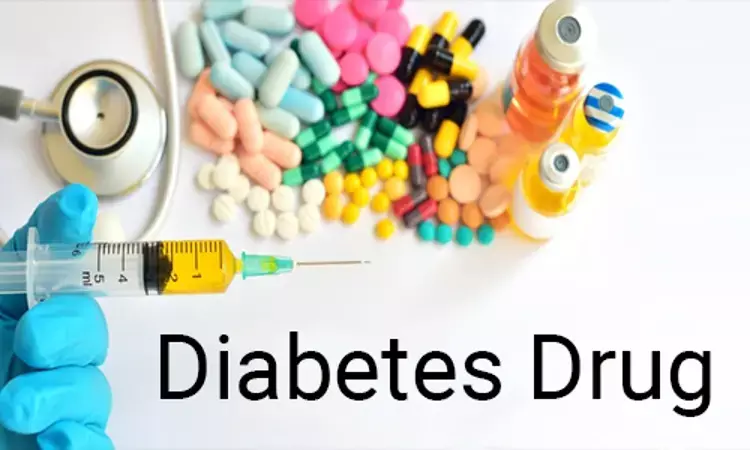- Home
- Medical news & Guidelines
- Anesthesiology
- Cardiology and CTVS
- Critical Care
- Dentistry
- Dermatology
- Diabetes and Endocrinology
- ENT
- Gastroenterology
- Medicine
- Nephrology
- Neurology
- Obstretics-Gynaecology
- Oncology
- Ophthalmology
- Orthopaedics
- Pediatrics-Neonatology
- Psychiatry
- Pulmonology
- Radiology
- Surgery
- Urology
- Laboratory Medicine
- Diet
- Nursing
- Paramedical
- Physiotherapy
- Health news
- Fact Check
- Bone Health Fact Check
- Brain Health Fact Check
- Cancer Related Fact Check
- Child Care Fact Check
- Dental and oral health fact check
- Diabetes and metabolic health fact check
- Diet and Nutrition Fact Check
- Eye and ENT Care Fact Check
- Fitness fact check
- Gut health fact check
- Heart health fact check
- Kidney health fact check
- Medical education fact check
- Men's health fact check
- Respiratory fact check
- Skin and hair care fact check
- Vaccine and Immunization fact check
- Women's health fact check
- AYUSH
- State News
- Andaman and Nicobar Islands
- Andhra Pradesh
- Arunachal Pradesh
- Assam
- Bihar
- Chandigarh
- Chattisgarh
- Dadra and Nagar Haveli
- Daman and Diu
- Delhi
- Goa
- Gujarat
- Haryana
- Himachal Pradesh
- Jammu & Kashmir
- Jharkhand
- Karnataka
- Kerala
- Ladakh
- Lakshadweep
- Madhya Pradesh
- Maharashtra
- Manipur
- Meghalaya
- Mizoram
- Nagaland
- Odisha
- Puducherry
- Punjab
- Rajasthan
- Sikkim
- Tamil Nadu
- Telangana
- Tripura
- Uttar Pradesh
- Uttrakhand
- West Bengal
- Medical Education
- Industry
Do sulfonylureas still have a role in blood sugar and diabetes control?

At present, there are a large number of pharmacological agents available for good control of blood sugar and effectively treat type 2 diabetes (T2D).The task of making a choice for the optimal drug for any given patient a complex task. Since newer agents offer several advantages, whether and when sulfonylureas (SUs) should still be used to treat T2D is controversial.
Expert Opinion from a European Consensus Panel to be published in the journal Diabetes Obesity Metabolism has laid down treatment guidelines and recommendations that should govern the general approach to diabetes management and optimum blood sugar and glycemic control. Although current joint EU/US guidelines address overall type 2 diabetes (T2D) management, this present European consensus paper aims to provide additional guidance on the use of sulfonylureas in T2D.
The experts summarize current local treatment guidelines in European countries, showing that sulfonylureas are still widely proposed as second-line treatment after metformin and often ranked at the same level as newer blood-sugar-lowering medications. Although, the newer agents confer greater benefits they are more costly.
Key recommendations
1. After metformin, for second-line glucose-lowering medication, sodium-glucose cotransporter-2 inhibitors (SGLT-2is), glucagon-like peptide-1 receptor agonists (GLP-1RAs), or to a lesser extent, dipeptidyl peptidase-4 inhibitors (DPP-4is) are preferred over sulfonylureas because of minimal hypoglycemic risk.
2. Positive (GLP-1RA, SGLT-2i) or neutral (DPP-4i) cardiovascular (CV) effects.
3.Positive renal effects (SGLT-2i>>GLP-1RA>DPP-4i).
4.Neutral (DPP-4i) or positive (GLP-1RA, SGLT-2i) body-weight effects.
5.Possible longer blood sugar control and ease of use particularly in individuals with ascertained CV disease or very high CV risk, SGLT-2i or GLP-1RA is recommended as part of diabetes treatment in the absence of contraindications.
Using sulfonylureas in place of SGLT2-i and GLP-1RAs may deprive patients of key advantages and potentially important cardiorenal benefits. In subjects with ascertained cardiovascular disease or at very high cardiovascular risk, SGLT2-i and/or GLP-1RAs should be used as part of diabetes management, in the absence of contraindications.
Routine second-line sulfonylurea use may be acceptable in resource-constrained settings, with these considerations:Gliclazide may be preferred over other sulfonylureas but patient education on hypoglycemia is desirable. The use of self-monitoring of blood sugar is advised to minimize hypoglycemic side effects. The decision to use sulfonylureas instead of SGLT-2i or GLP-1RA should be strongly supported, given that sulfonylureas do not confer the potential cardiorenal protective effects of the other drug classes.
For further reference log on to :
Consoli A, Czupryniak L, Duarte R, Jermendy G, Kautzky-Willer A, Mathieu C, Melo M, Mosenzon O, Nobels F, Papanas N, Roman G, Schnell O, Sotiropoulos A, Stehouwer CDA, Tack CJ, Woo V, Fadini GP, Raz I. Positioning sulfonylureas in a modern treatment algorithm for patients with type 2 diabetes: expert opinion from a European Consensus Panel. Diabetes Obes Metab. 2020 Jun 1 [Epub ahead of print].
Dr Kamal Kant Kohli-MBBS, DTCD- a chest specialist with more than 30 years of practice and a flair for writing clinical articles, Dr Kamal Kant Kohli joined Medical Dialogues as a Chief Editor of Medical News. Besides writing articles, as an editor, he proofreads and verifies all the medical content published on Medical Dialogues including those coming from journals, studies,medical conferences,guidelines etc. Email: drkohli@medicaldialogues.in. Contact no. 011-43720751


